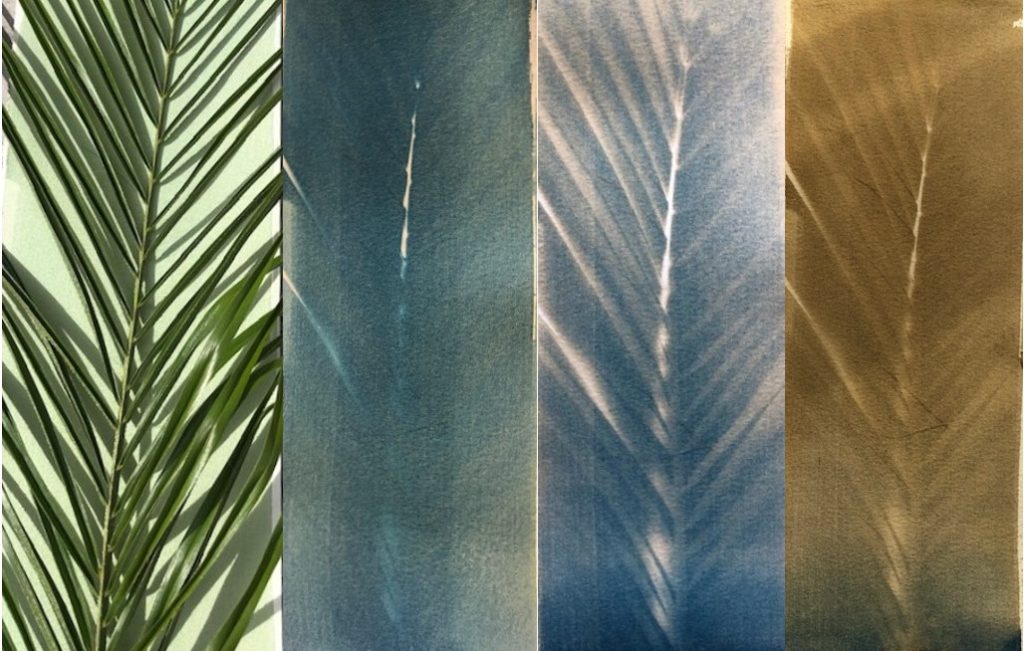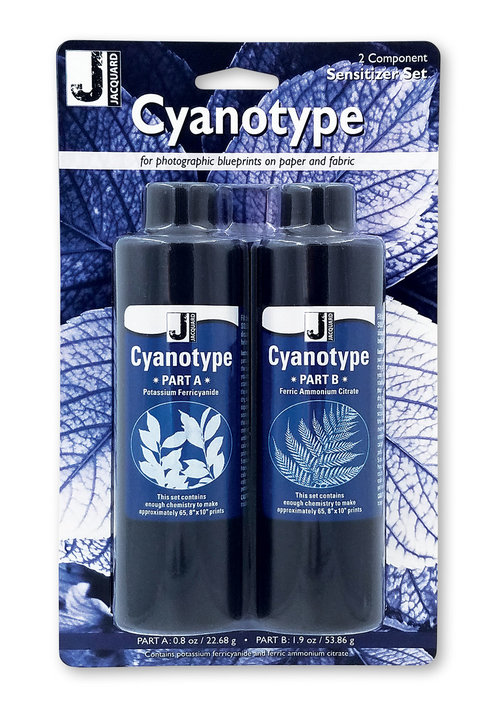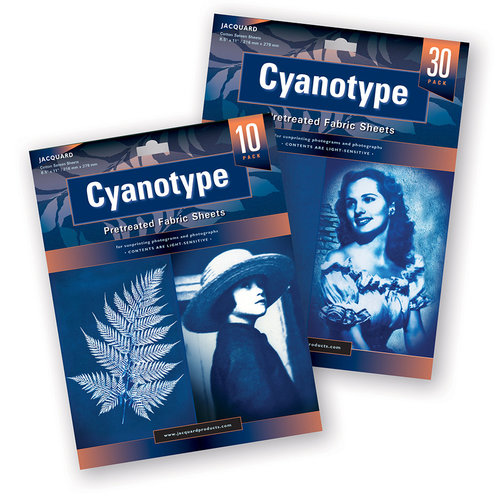The post is guest-written by Arlene Westen.
Foolproof Sun-Printing
I have been an art instructor for many years, and one of the most common remarks that I have heard from beginner students is, “I want to make art but I’m just not that creative.”
I know that it’s not true, but my job as an effective instructor is to create confidence in students so that they can dispel that belief.
When I can demonstrate materials or a technique that gets people excited, and then further lead them down that ‘rabbit hole’ of surprises, unexpected outcomes, and marveled-upon successes, I feel like someone who has just handed the keys over to the next occupant of a grand castle.
Okay, that may sound a little corny, but I really am passionate about sharing creative processes that are almost entirely foolproof!

Creating cyanotypes is really just that.
Cyanotypes are uncomplicated science
With the ease of pre-printed cyanotype fabrics and papers, there is no need for any special equipment, darkroom, or exposure to hazardous chemicals. The only things needed to produce incredible one-of-kind prints in beautiful Prussian Blue is a UV light source and an object that will cast a shadow.
For well over a century, plant-based materials casted shadows; flower specimens, leaves, and roots. Early prints used two chemicals, Ferric Ammonium Citrate and Potassium Ferricyanide, and photographically documented the natural world long before darkroom chemistry came into existence.

Nowadays there is no need to mix cyanotype chemicals (unless one chooses to) as pre-sensitized fabrics are readily available. Although mildly light-sensitive, one has ample time to remove a pre-coated sheet from the sealed protective package under subdued light conditions, lay it on a flat surface to support it, set an object on top to block out some light, place the stack into direct sunlight and wait the desired amount of time for the print to develop. Exposure time takes anywhere from 5 to 45 minutes depending on how strong the sunlight is at the time. Rinse it well under cold running tap water after exposure. This stops the developing process, removing all residual chemicals. After that, drying stabilizes the colour.
The entire process can take as little as ten minutes from start to finish. This is truly entry-level cyanotype printmaking for beginners!
It’s easy and inexpensive
There are so many things to love about this art form. The pre-coated fabric sheets are not toxic to use when handled correctly, and they retain their original hand and drape. The process is relatively inexpensive compared to other methods of transferring an image or printing photographs.
So, if it’s that easy, why should anyone want to take a class to learn more about this historical photographic process? Let me just say, that this is only the beginning! Once you have created your first print, you may never look at the world in quite the same way.
There are so many possibilities
One can delve so much further into the cyanotype process by mixing the chemicals from scratch, and coating various substrates other than fabric or paper. Try using negatives instead of placing objects directly on the coated surface, or manipulating the timing of objects to create wonderful ombre effects. Try bleaching or toning prints with botanicals to achieve subtle colour variations.
I’d love to continue but I’m limited to 500 and 700 words. I might be compelled to write another in the future to cover experimental blueprinting. It’s difficult not to get excited by the many possibilities that this art form presents!


As someone who has been working with cyanotype for many years, I believe it should be part of every artist’s toolkit. It’s great fun, and it’s especially admired by fans of old-world photography, contemporary image-making, and alternative photographic processes. Cyanotyping opens up a vast playground of creative possibilities for fibre and mixed media artists, photographers, printmakers, botanists, children of all ages, natural history buffs and students of science to continually learn from and explore.
For those who feel ‘creativity’ is for other people, I whole-heartedly encourage them to try making their own cyanotypes, whether on their own or in one of my classes at the Paint Spot.
Arlene Westen, Sponsored Instructor of The Paint Spot
https://www.instagram.com/arlenewesten/

